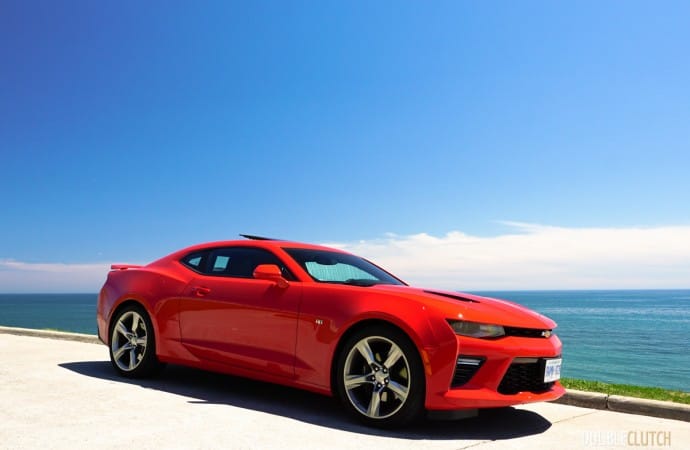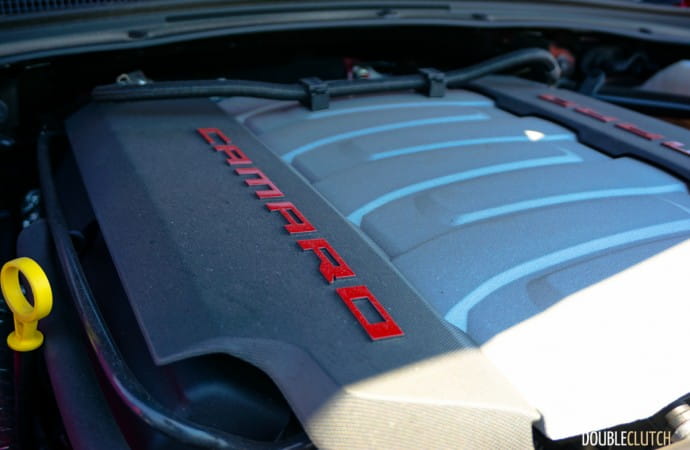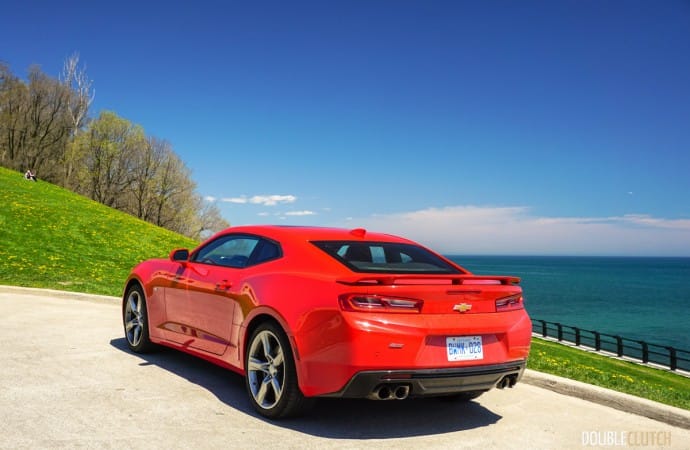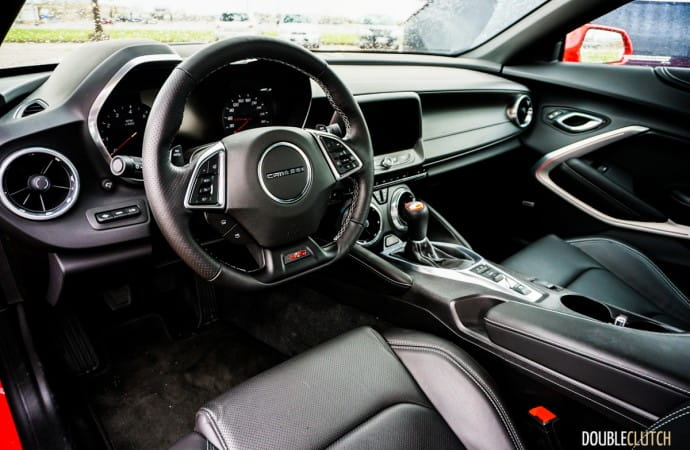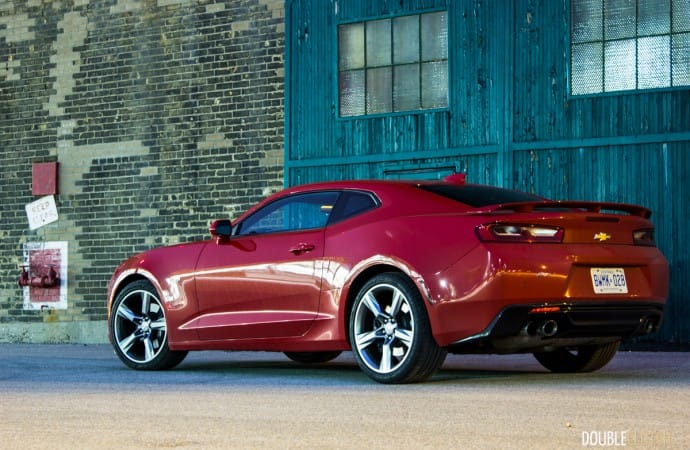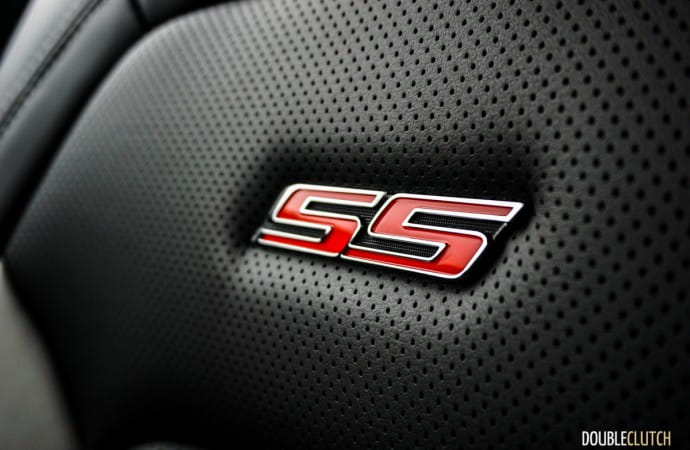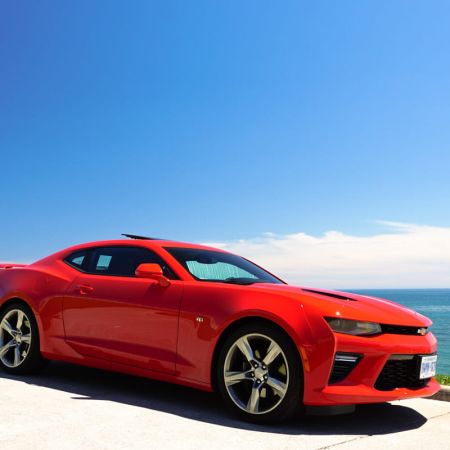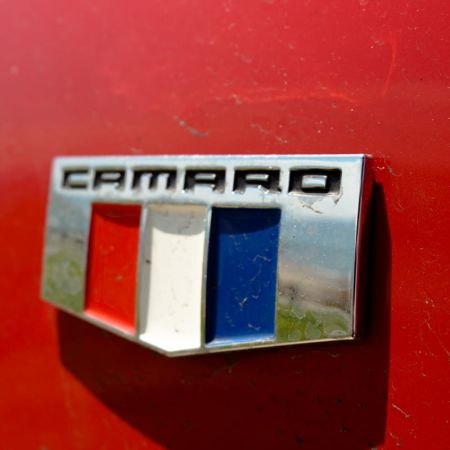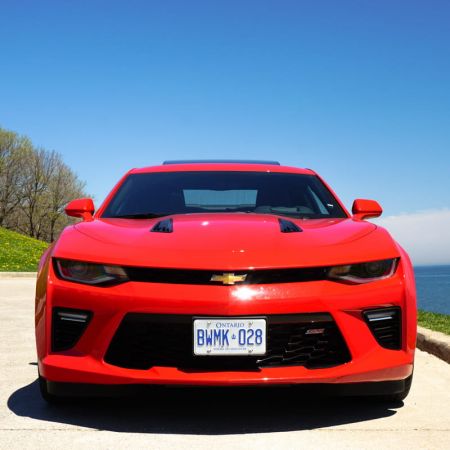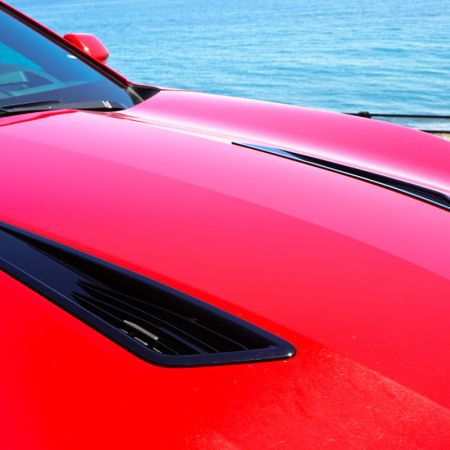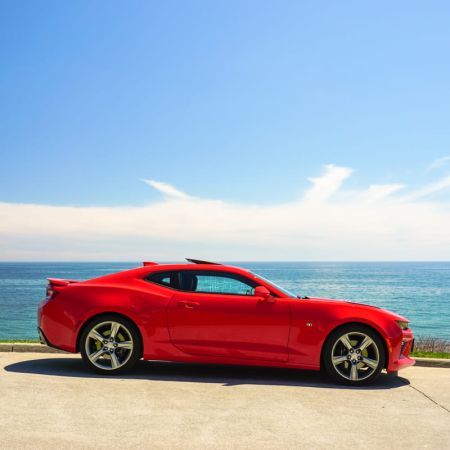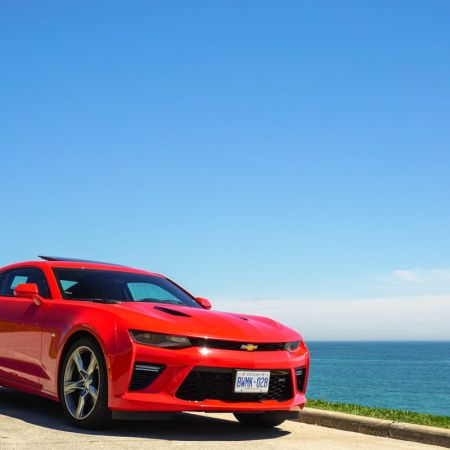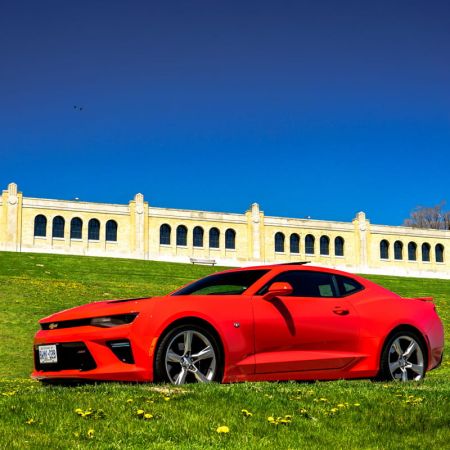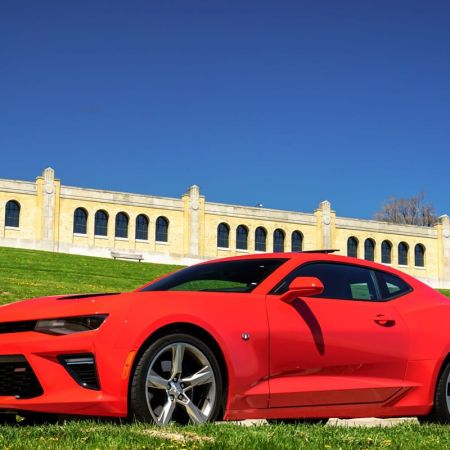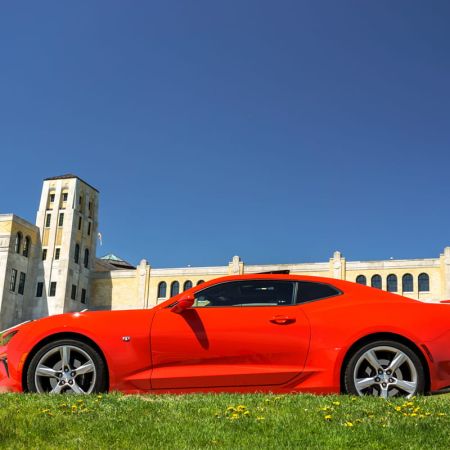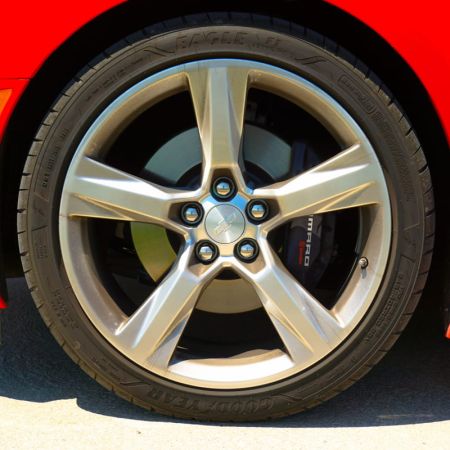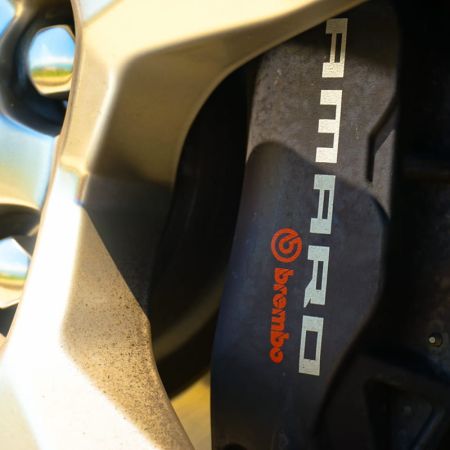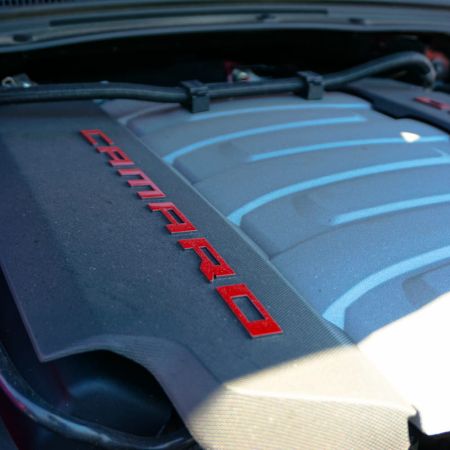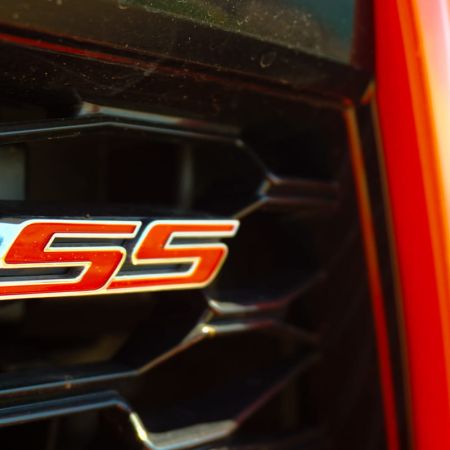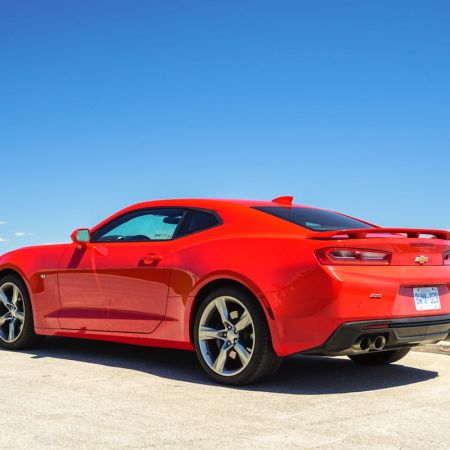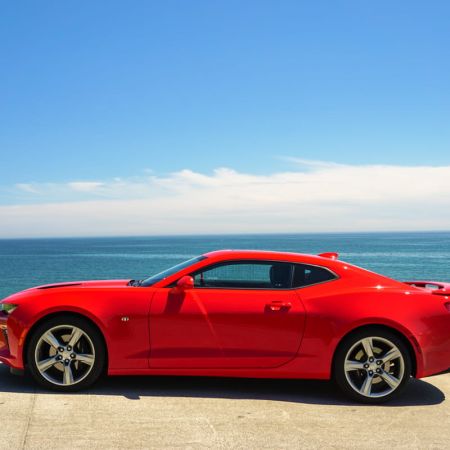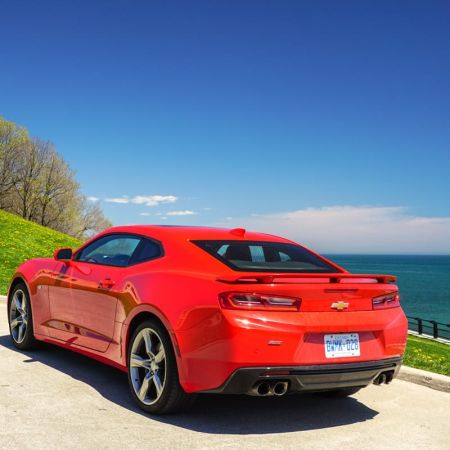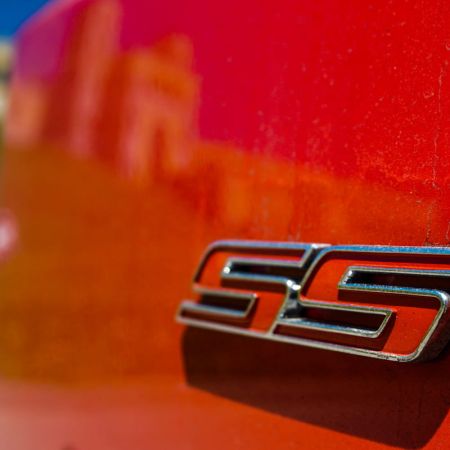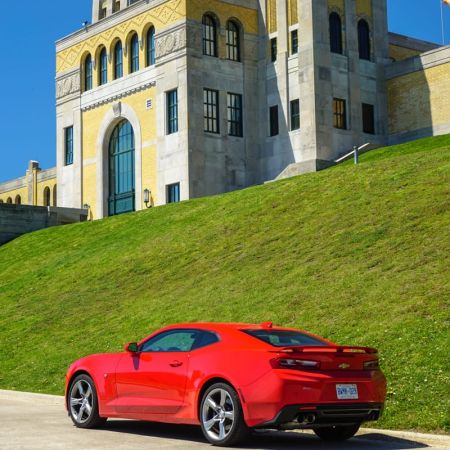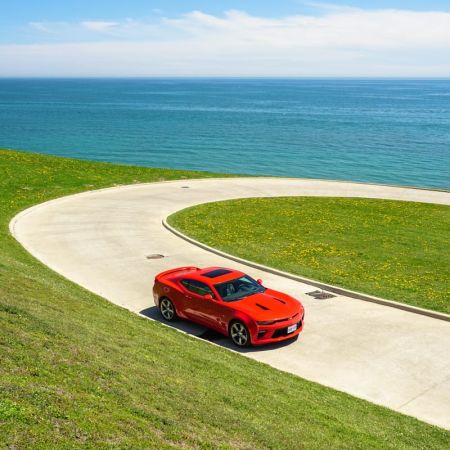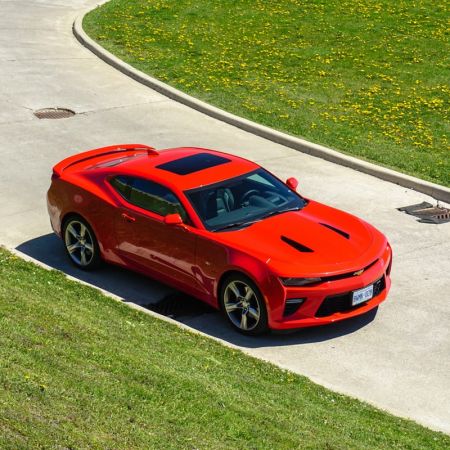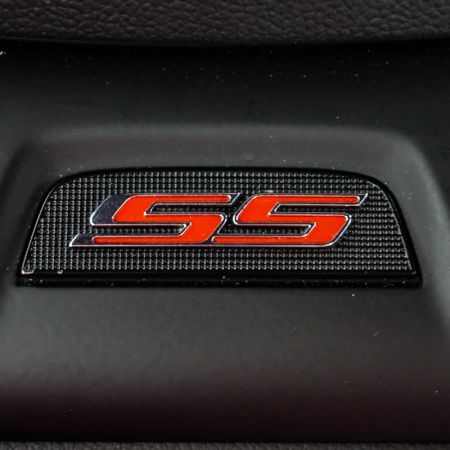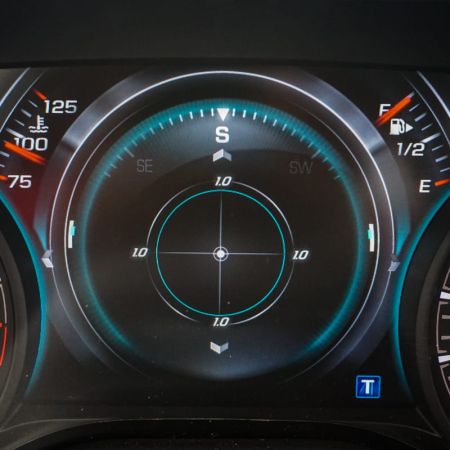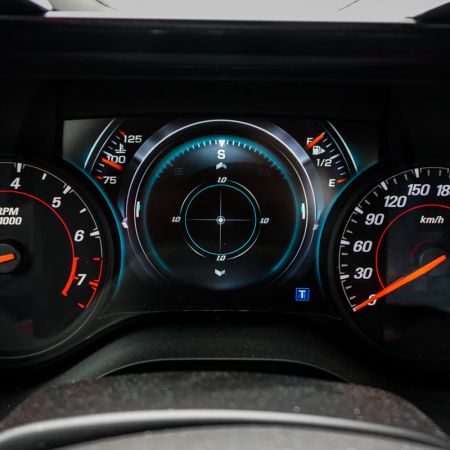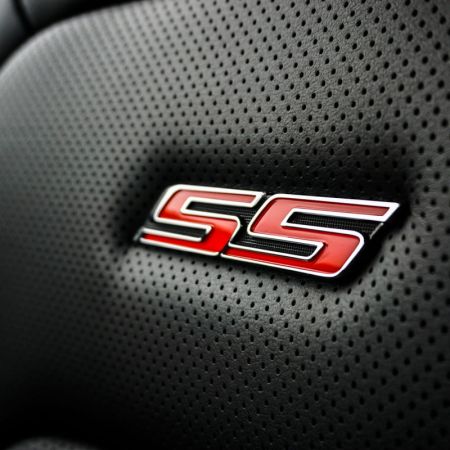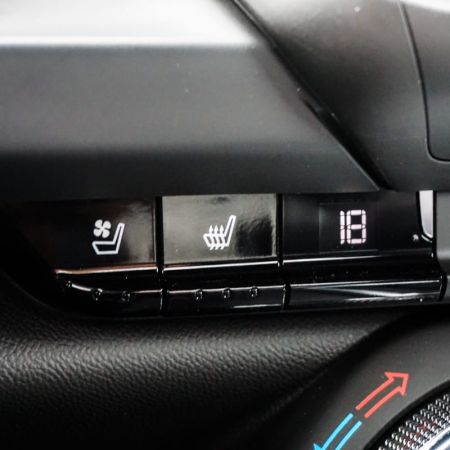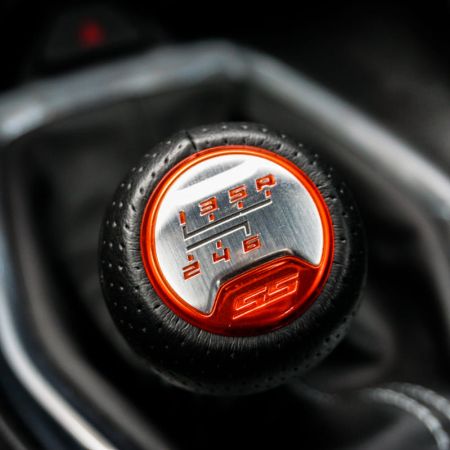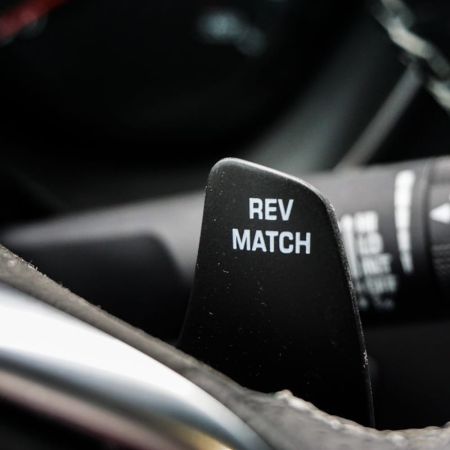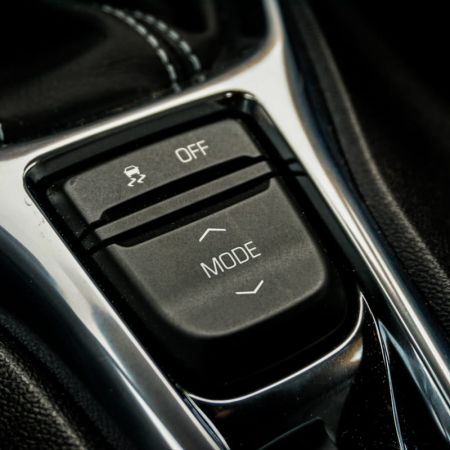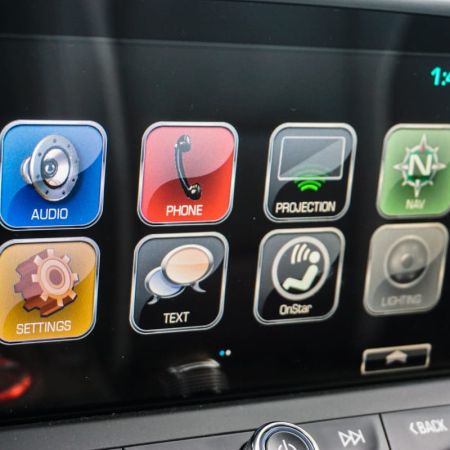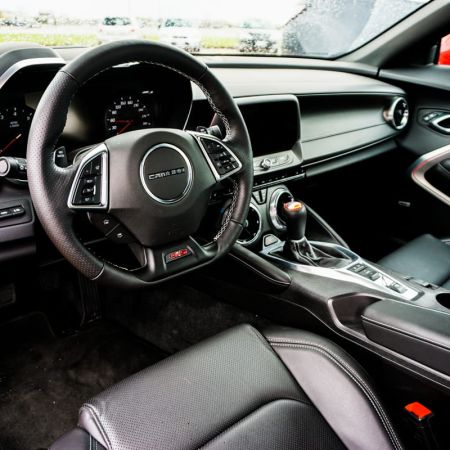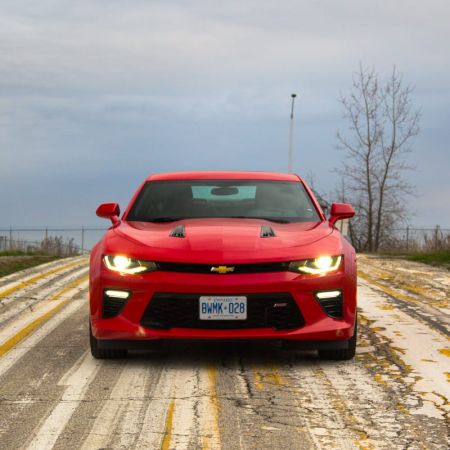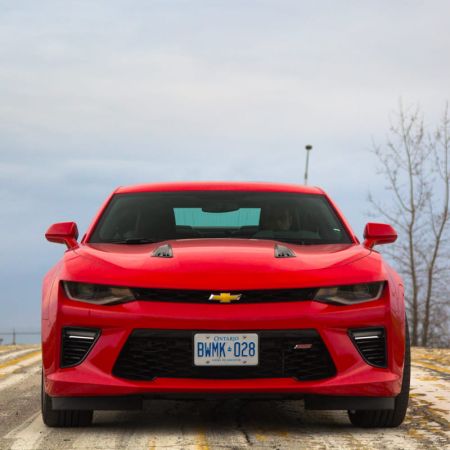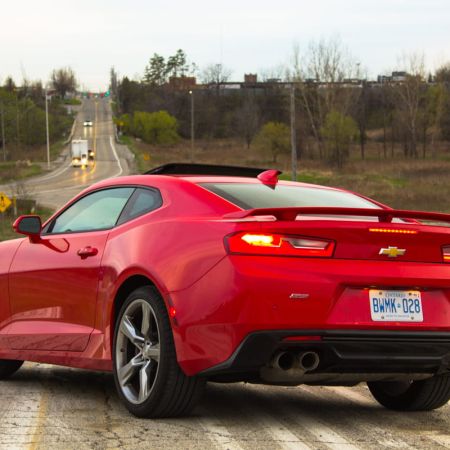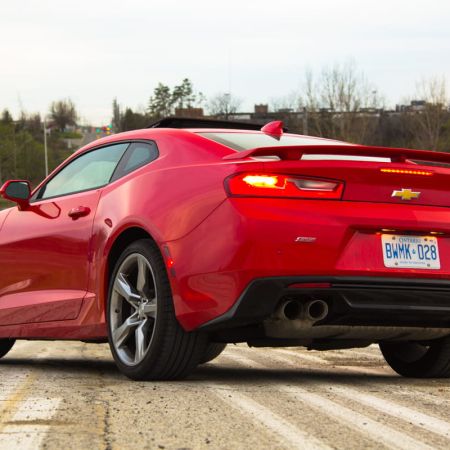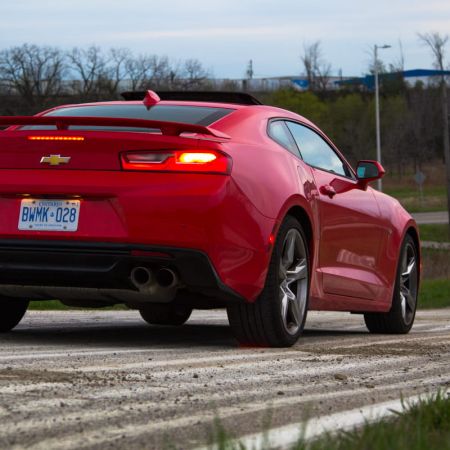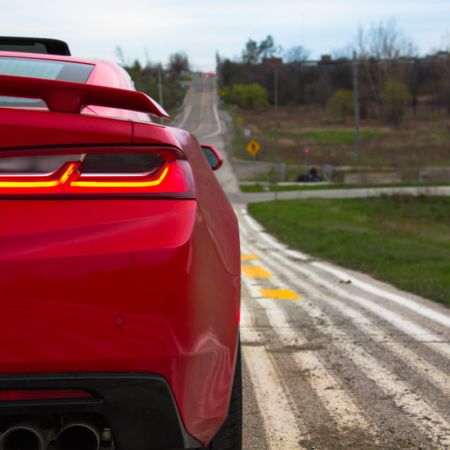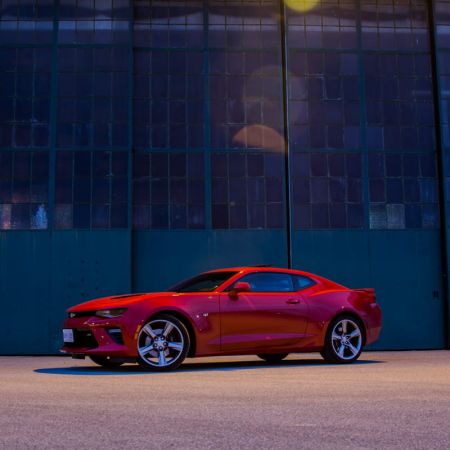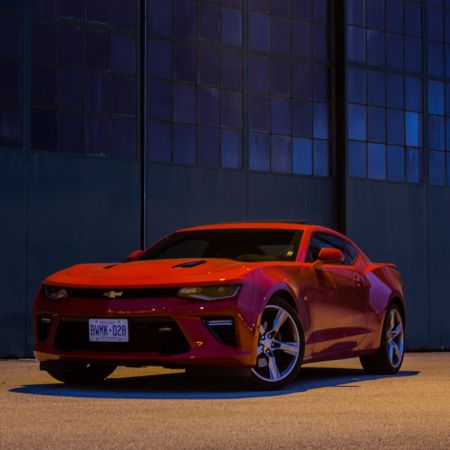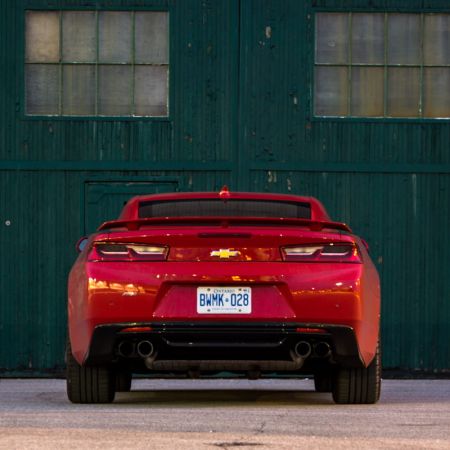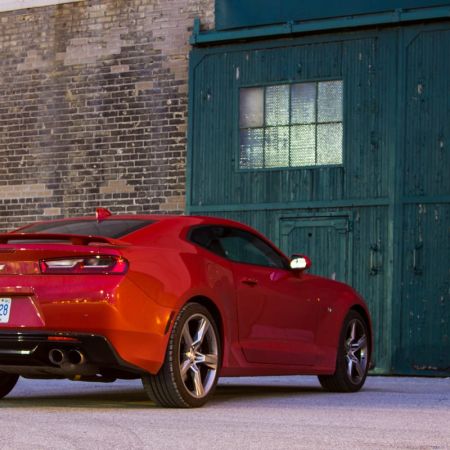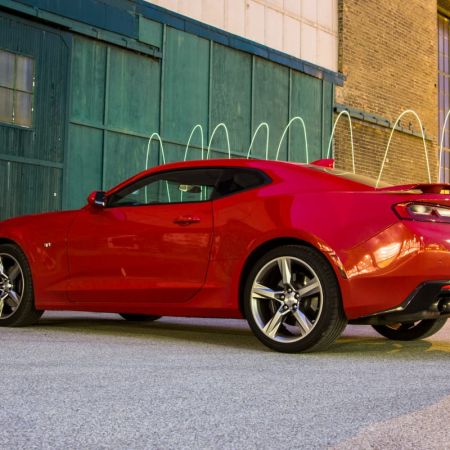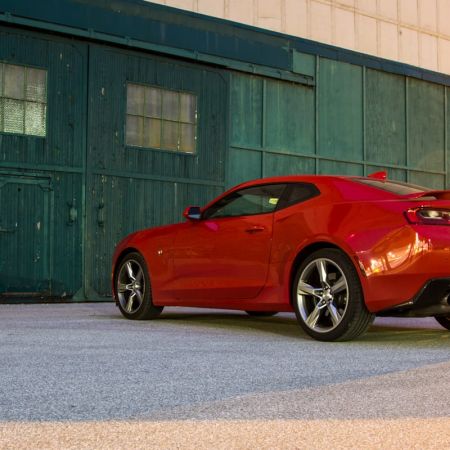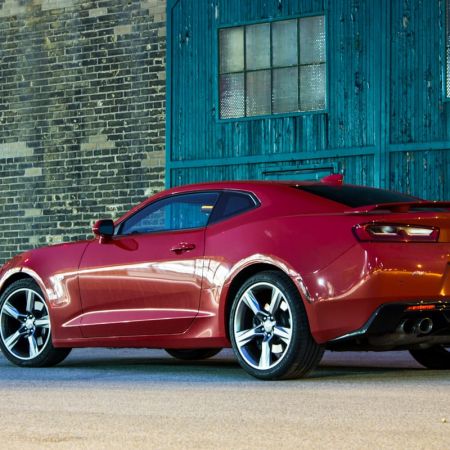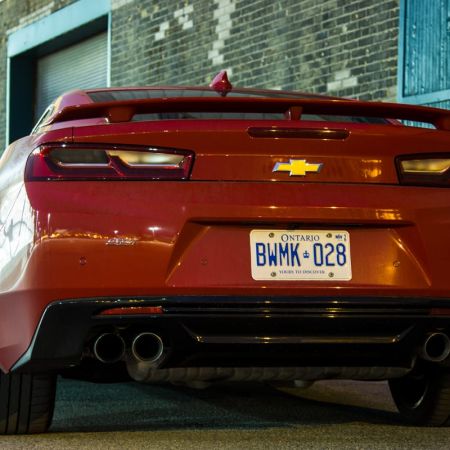I don’t make myself out to be a muscle car guy in any way. In fact, I’m probably the least likely of the entire DoubleClutch.ca team to be enamoured by a V8-powered American two-door. The Camaro is a special car though – special enough that within our little editorial family alone, we have five of them, with a potential sixth on the way, ranging in years from 1984 to 2011. Four of the five are V8s, and there has to be something special about this American icon that makes it stand out. I was lucky enough to be one of the first Canadians to be offered a weeklong test of the 2016 Chevrolet Camaro SS Coupé, complete with the six-speed manual transmission.
We actually previewed the new Camaro back in the fall, on a first drive event down south. I came away head over heels for the car, but can easily be excitement of a new 455-horsepower product. After a week with it on my home turf, I analyzed the car closely. The design works beautifully – the fifth-generation car that this new model replaces was striking at first but has not exactly aged well. This new one, affectionately called Camaro Six, is a more conservative design that still employs all of the important characteristics of the Camaro line, and I foresee it to age gracefully.
Of course, styling is only part of the Camaro’s allure – it’s what hides under that long American hood that really matters. The last Camaro SS was powered by a V8 called the L99, which was essentially an LS3 with cylinder deactivation and variable valve timing, displacing 6.2 liters. The 2016 model uses the same LT1 6.2L V8 as the Corvette Stingray (reviewed here), with plenty of updated and re-engineered parts over previous LT1s. It puts out 455 horsepower (at 6,000RPM) and 455 lb-ft of torque at 4,400RPM. To put it simply, this car hauls ass in every sense of the phrase, with no hesitation and the confidence of a cheetah in heat.
The response, oh the response… there are few better feelings out there than going wide-open throttle off an on-ramp and accelerating to highway speeds in the Camaro. The dual-stage performance exhaust ($940) is worth every penny they charge for it, and provides a natural symphony like no other in its segment. The stability control system helps keep the car in a straight line, but the rear-drive setup means it’s tail happy and ready to burn rubber right up to third gear. The various drive modes, between “Tour”, “Sport”, “Track”, and “Snow/Ice” toggle variables like throttle response, engine mapping, and the amount of noise coming out of the exhaust.
Seemingly a perfect match for the car is the six-speed manual, a Tremec TR6060. There is an eight-speed automatic available, but after spending some time with this car and considering the fact that the manual transmission period will eventually become extinct, this experience is completely worth it. The clutch is heavy as expected for a V8 muscle car, but has a definitive bite point and is pretty easy to master for a proficient manual transmission driver. The shifter’s throws cannot be described as particularly short, but it’s precise enough to be effortlessly tossed about in dynamic driving situations.
In previous years, GM’s Magnetic Ride Control was only available on ZL1 models of the Camaro. That has changed for the new model, and the adaptive dampers can be had on the SS as well. Our car was a fully loaded 2SS equipped with the magnetic dampers, and we were able to observe a noticeable change in ride quality in the various settings. Most importantly, Chevrolet brags that Magnetic Ride Control can analyze surroundings over a thousand times per second, and adjusting the dampers accordingly to produce maximum precision and the most dynamic ride possible.
There’s the old saying that muscle cars are incapable of tackling corners, and through years of development and intense attention to handling bits, the big three have managed to change things. The new Camaro and Mustang (reviewed here) are both extremely capable cars even in the corners. The Camaro’s steering is very heavy when compared to other vehicles, but has plenty of feel and bites back in all the right places. The car corners with just as much composure and reassurance as it does when careening to highway speeds in a straight line.
Fuel mileage is never something to brag about with a V8 muscle car, but with features like cylinder deactivation, Chevrolet has managed to pull off decent numbers. Suggested efficiency is 14.3L/100km in the city and 9.4L/100km highway, for a combined rating of 12.1L/100km. Surprisingly, I was able to get the highway mileage as low as 8.2L/100km effortlessly, though spirited driving on the back roads and commuting in the city returned as high as 15.2L/100km. My overall average for the week was about 13.8L/100km, and the Camaro will hold 71L of 91-octane premium fuel.
On the inside, the Camaro feels like a typical muscle car. Materials have been significantly improved over the last car, and the Corvette’s clever climate controls integrated onto the center vent surrounds are a nice touch. The SS’ seats are very comfortable, and provide enough adjustability for both tall and short drivers. Headroom in the rear seats is non-existent, but front passengers will find themselves in excellent accommodations. The driving position overall is excellent, and the power sunroof is a great touch to cruise around on breezy spring nights while enjoying the orchestra provided by the exhaust.
Chevrolet’s MyLink infotainment system is one I have cursed at in the past for being laggy, unresponsive, and overall having missed the mark. It has now been significantly improved and I can say I genuinely like it, almost as much as Ford’s new SYNC3 (reviewed here). This application in the Camaro has Apple Car Play and Android Auto, and the car also provides 4G-LTE functionality and act as a rolling hotspot. Bluetooth connectivity is effortless, and the USB ports are concealed to hide devices from greedy onlookers.
Pricing for the Camaro starts at just $29,195 for the base model, equipped with the 2.0L turbocharged four-cylinder. A V6 is optional on LT trim models, whereas the SS models pack the fire-breathing V8 tested here. The 1SS starts at $43,000, and the loaded 2SS adds at $48,000. The 2SS adds things like 20” wheels, heated and ventilated leather seats, Bose nine-speaker audio, wireless charging, and heads-up display. Our car also had the $940 Performance Exhaust, $1,895 Magnetic Ride Control, $1,195 power sunroof, and MyLink with navigation for $795. The total sticker on our loaded-to-the-gills 2SS was $52,075.
The only gaping flaw with the new Camaro is a carryover from the previous model, and that’s the awful visibility out of the cabin. The windshield is raked enough to impair the driver’s field of vision, the side windows are gun-slits, and the rear headrests cut significantly into rearward visibility too. Some might suggest that if you want more sightlines, opt for the convertible and live in a climate where you can drive top down year-round, but this isn’t a viable option, especially if you want the structural rigidity of the coupe. I will say that visibility has improved over the last car, but not by enough to matter.
There is an endless list of things to love about the 2016 Chevrolet Camaro SS. The subpar visibility may be a deal-breaker for some, but the Ford Mustang and Dodge Challenger aren’t significantly better in this regard. The muscle car wars haven’t really changed in the past half-century – you buy the one that tugs at your heartstrings the most. If I had to show loyalty to a particular one as a child it would have been the Mustang, as Gone in 60 Seconds is one of my all-time favourite films. At the end of my test week with the new Camaro though, I feared that GM would have to pry the keys from me as I kicked and screamed – it’s just that great.
2016 Chevrolet Camaro SS Gallery
See Also:
2015 Ford Mustang GT Convertible

